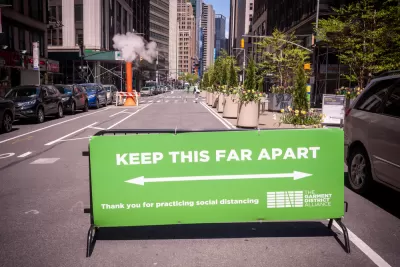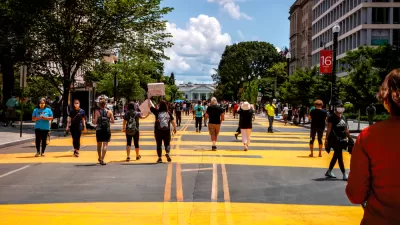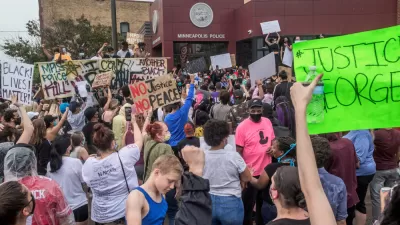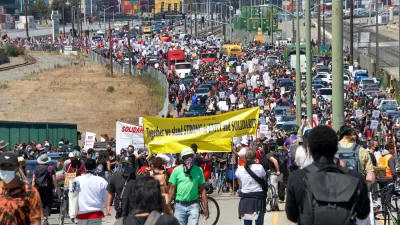The ongoing debate about the role of marginalized communities in the emergency planning programs of the pandemic has now been detailed on the pages of the New York Times.

An article by Emily Badger for The New York Times amplifies an ongoing debate about planning processes during the pandemic—emergency efforts to reshape the public realm to create more space for pedestrians and restaurant and retail businesses—failing the equity test of including marginalized and under-served communities.
The primary source for Badger's coverage of the debate is Destiny Thomas, whose writing on this subject was shared here on Planetizen in June, and who has also been a source in other articles raising the same issues.
Here's how Badger summarizes the debate:
Today, visions of urban life reinvented for the future are colliding with unaddressed inequalities from the past. And the urgency of a public health threat is pushing against demands for the long work of inclusion.
So the questions raised by the debate are questions about the fundamental processes and outcomes of planning: who gets to make the decisions about the future of cities and communities, and how are planners reckoning with the racist and discriminatory outcomes of previous generations of planning decisions?
As an example of the reforms proposed by Thomas, Badger includes the following:
Ms. Thomas, the anthropologist-planner, who leads a team of strategists called the Thrivance Group, says traditional public meetings aren’t her idea of engagement anyway. Instead, she suggests cities could fund community health clinics or food banks already serving these neighborhoods to engage residents on what they need from the city at the same time. City departments could also put community residents on staff to do this work. Ms. Lemar proposes using elementary schools to reach families who would never attend public meetings.
The article treats Oakland's slow streets specifically as a case study for the issues of representation and political power in planning during the pandemic, while raising the larger implications of those experiences for the practice of planning and community engagement for planners around the country by citing academics and advocates from around the country.
FULL STORY: The Pandemic Has Pushed Aside City Planning Rules. But to Whose Benefit?

Montreal Mall to Become 6,000 Housing Units
Place Versailles will be transformed into a mixed-use complex over the next 25 years.

Planetizen Federal Action Tracker
A weekly monitor of how Trump’s orders and actions are impacting planners and planning in America.

California High-Speed Rail's Plan to Right Itself
The railroad's new CEO thinks he can get the project back on track. The stars will need to align this summer.

Tenant Advocates: Rent Gouging Rampant After LA Wildfires
The Rent Brigade says it's found evidence of thousands of likely instances of rent gouging. In some cases, the landlords accused of exploiting the fires had made campaign donations to those responsible for enforcement.

Seattle’s Upzoning Plan is Ambitious, Light on Details
The city passed a ‘bare-bones’ framework to comply with state housing laws that paves the way for more middle housing, but the debate over how and where to build is just getting started.

DOJ Seeks to End USDOT Affirmative Action Program
The Disadvantaged Business Enterprise Program encouraged contracting with minority- and women-owned businesses in the transportation sector, where these groups are vastly underrepresented.
Urban Design for Planners 1: Software Tools
This six-course series explores essential urban design concepts using open source software and equips planners with the tools they need to participate fully in the urban design process.
Planning for Universal Design
Learn the tools for implementing Universal Design in planning regulations.
City of Camden Redevelopment Agency
City of Astoria
Transportation Research & Education Center (TREC) at Portland State University
City of Camden Redevelopment Agency
Municipality of Princeton (NJ)
Regional Transportation Commission of Southern Nevada





























